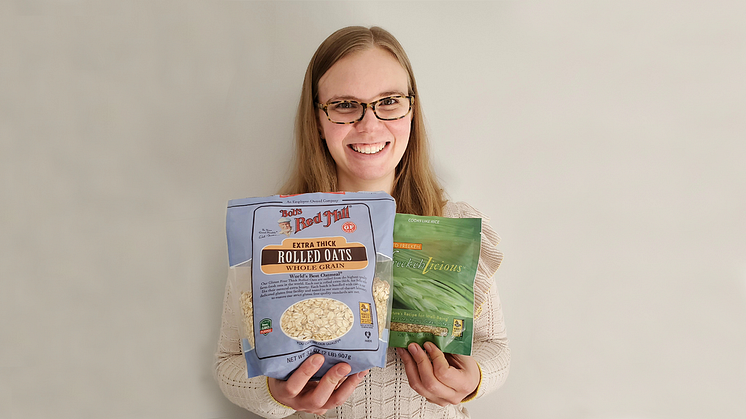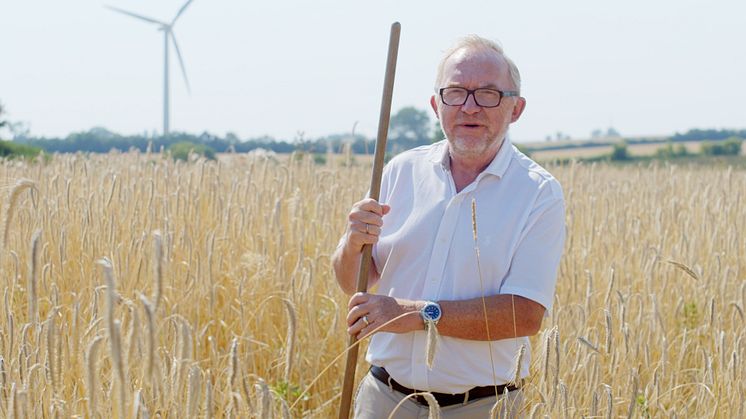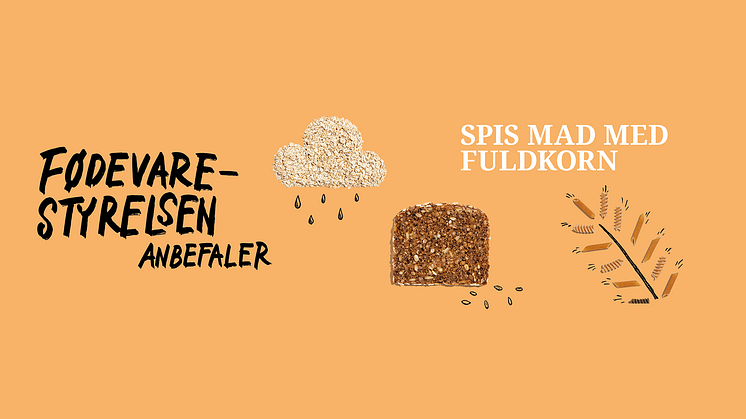
Nyhed -
8 questions for Caroline Sluyter – Program Director for The Whole Grains Council in the US
Caroline Sluyter is Program Director for The Whole Grains Council in the United States of America. We meet Caroline and asked her 8 questions about how they have succeeded in expanding the whole grain stamp to 63 different countries around the world - and how the pandemic have affected the American consumers. Also you can get Caroline's advice on how to increase whole grains in your daily diet.
We have been inspired by the great work done in the US by the Whole Grains Council and are very excited to share this interview with Caroline Sluyter.
When and why was the Whole Grains Council in the US established? How do you work to increase whole grain consumption in the US?
The Whole Grains Council is one of several programs run by Oldways, which is a nonprofit food and nutrition organization that works to improve public health through education about cultural food traditions. In 2002, a group of concerned millers, manufacturers, scientists and chefs approached Oldways during a Whole Grains Summit we were hosting in San Diego, California. Together it was decided that Oldways would create a program focused on increasing whole grain consumption. In 2003 the Whole Grains Council was founded and in 2005 the Whole Grain Stamp was introduced as a way to help Americans identify whole grain food products when grocery shopping. From its start, the Whole Grains Council has worked to promote whole grains through positive messaging about their benefits, and has helped food companies, retailers, and restaurants create more and better whole grain products/foods to meet the needs of health-conscious consumers. Additionally, the Whole Grains Council acts as an information and communication hub, connecting scientists, industry members, health professionals, and consumers.
What is the biggest challenge you face in increasing whole grain intake?
There is a lot of competing messaging in the food and nutrition space these days. Unfortunately, the negative messaging and pseudo-science that demonizes particular food groups and ingredients is often more headline-grabbing than the long-recognized and well-studied benefits of eating a healthy, balanced diet rich in fruits, vegetables, whole grains, legumes, nuts and seeds.
What is the biggest force/opportunity you have for increasing whole grain intake?
Perhaps more than ever, consumers are thinking about where their food comes from, and how and who produced it. Food literacy and culinary curiosity are on the rise, which is a natural outcome of the widespread attention that’s been given to food and nutrition topics over the past decade or so. Thanks to cooking shows, food blogs, international travel, and the growing conversation about where our food comes from, consumers are eagerly embracing new cuisines and ingredients. It’s the perfect time tell the story of whole grains and to talk about the integral role that whole grains have played in just about every traditional diet in the world.
The whole grain stamp is represented in a lot of countries outside the US. How did you succeed in expanding the whole grain stamp to so many countries?
Today, the Whole Grain Stamp is used on over 13,000 products in 63 countries and the Stamp graphic is available in seven languages: English, Arabic, Chinese, French/English (for Canada), Spanish, Portuguese, and Japanese. While the Whole Grain Stamp program started as a US-based certification program, we began to see interest from other countries pretty early on. Within two years of introducing the Stamp to the US market, our team was approving products for Stamp use in both the UK and Canada, with Mexico following shortly after that. From there, the expansion into other markets has just continued to grow as manufacturers in different countries have reached out to us requesting to submit their products for review and approval through our program. In a few cases, we have had to modify our Stamp use guidelines slightly to align with local whole grain labeling regulations, but our Stamp program has been pretty adaptable in most regulatory settings.
Have you seen any changes in the way’s consumers behave during the pandemic?
In the early months of the pandemic and the lockdown here in the US, many consumers were stockpiling large amounts of non-perishable foods including a lot of grain-based packaged items. Grocery stores were having a really hard time keeping up with demand and navigating distribution disruptions caused by the lockdown. There were two or three months last spring where it was common to find nearly empty store shelves when shopping, which meant that shoppers couldn’t afford to be as picky about the brands or products they were purchasing as they might normally be. This meant many consumers were buying items that were new to them. We saw cases where the all-purpose white flour was sold out, but there was spelt flour still available, or there was no brown rice to be found, but millet and wheat berries could serve as a substitute.
We know a lot of people have done much more cooking and baking at home since the pandemic began, so we’re eager to see how this may have increased the amount of whole grain people are eating. We are currently working on a survey of US consumers and will be excited to gain more insight into the ways the pandemic has influenced consumer behavior, particularly as it relates to whole grains.
What is your best advice to increase whole grain in your daily diet?
Making easy swaps, by substituting in whole grain versions of foods you already eat is certainly one of the easiest ways to increase your whole grain intake without having to think too much about it. Use whole grain bread instead of white bread, brown rice (or farro, or quinoa) instead of white rice, and whole grain pasta instead of white pasta. When baking, trying substituting half of the all-purpose flour with whole grain flour. You may find yourself quite pleasantly surprised at the wonderful depth of flavor you get by using whole wheat or whole spelt in place of white flour.
What have surprised you the most – working with whole grains?
When I started working with whole grains, I knew all the reasons they were good for my health, but I didn’t understand all the culinary advantages of using whole grains. As I’ve done more baking and cooking with whole grains, it’s been amazing to learn how much they can elevate the taste of a dish and lend delicate, complex flavor notes to baked goods. It’s true that your tastebuds adjust over time and at this point I strongly, strongly prefer the taste of whole grains.
What is your next goal in the Whole Grains Council?
One of the upsides of the pandemic is that it’s nudged us to move even more of our activity online where it’s more widely accessible to people regardless of their geographic location. This summer we’ll be launching a brand new website that will make it even easier to locate our resources, recipes, and online webinar courses. In September, we’ll be celebrating Whole Grains Month on social media (@wholegrains_council) and on November 16 we’ll be joining the Whole Grain Initiative’s International Whole Grain Day event. In the meantime, our team is working on contributing to a book about ancient grains and working on publishing a journal article examining whole grain trends in packaged foods by analyzing 15+ years of data from our Whole Grain Stamped Products Database.


